As a fan of handmade steel bicycle frames, especially those of English design, one of my favorite framebuilders was a gentleman named Ron Cooper. Ron got his start working at A.S. Gillott as a teenager in 1947, before branching out on his own in the late 1960s. The British bicycle industry was robust during this time, but also very close-knit, with some individual builders working for a variety of different companies throughout their career.
Arthur S. Gillott started trading as cycle retailer A.S. Gillott in 1921 at 179 Southampton Way, S.East London. Shortly thereafter, 177 Southampton Way was rented, and eventually purchased. 181 Southampton Way later became the corner showroom. Mr. Harry Carrington was hired by Mr. Gillott in 1929 as an assistant. At this time, the firm was a cycling equipment trader and retailer.
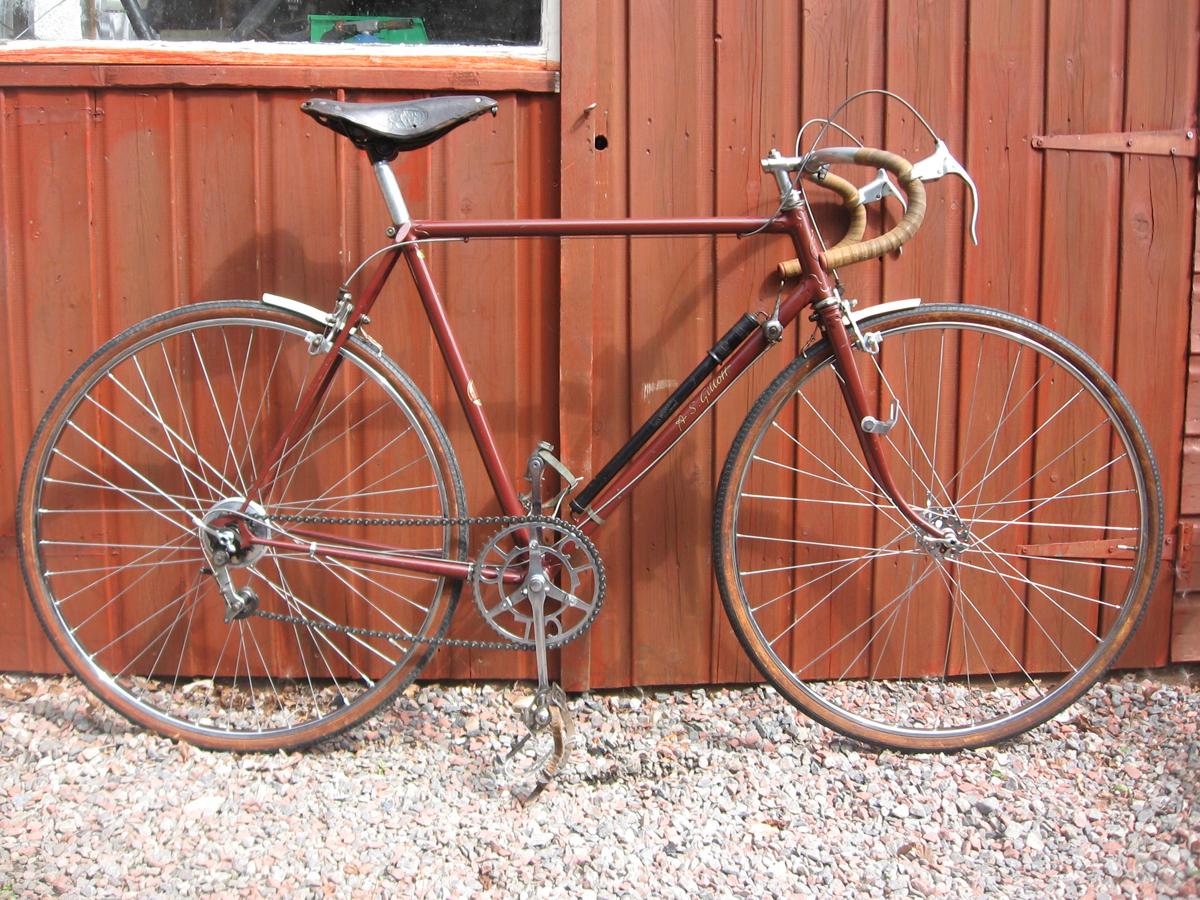
By the early part of 1943, most of the day-to-day business operations effort was taken over by Harry Carrington, as Mr. Gillott was in ill health. Around this time Mr. Gillott signed over 49% of the business to Harry.
In 1945, Harry developed a keen interest in the development of lightweights, and felt the company had to move into the framebuilding market in order to flourish. To this end, he employed a builder by the name of Jim Collier (rescuing him from doing war work at Woolwich Arsenal) and commenced frame construction, concentrating mostly on the needs of local clubmen and racing time trialists (“testers”), as did most specialists at the time.
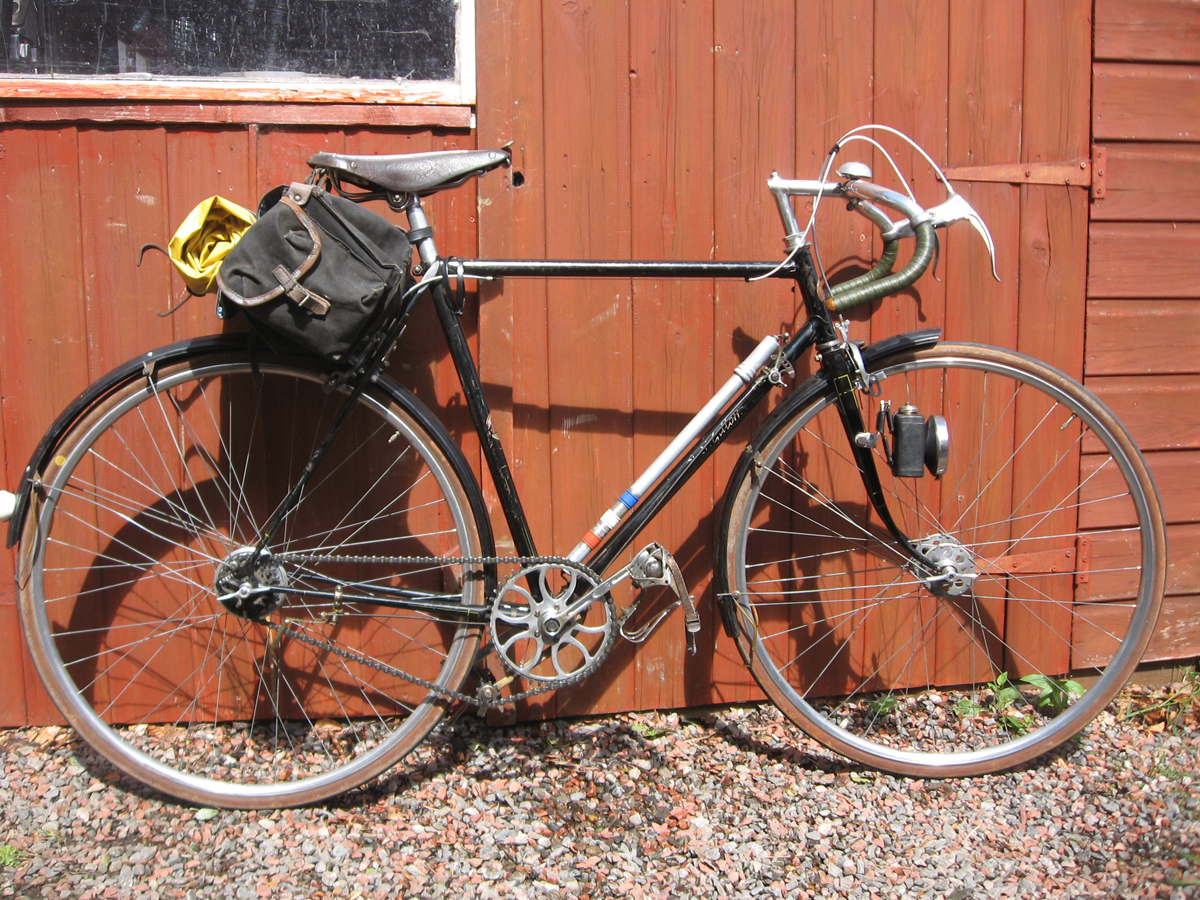
Up until this point, 177 Southampton Way was the stockroom, but then became framebuilder Jim Collier’s workshop. Before the war, Collier had been a framebuilder at Hobbs of Barbican, another classic British frame company.
The first Gillotts were produced in 1945 and carried frame number 945–. The earliest registered A.S. Gillott is number 94631, the 31st frame built in 1946.
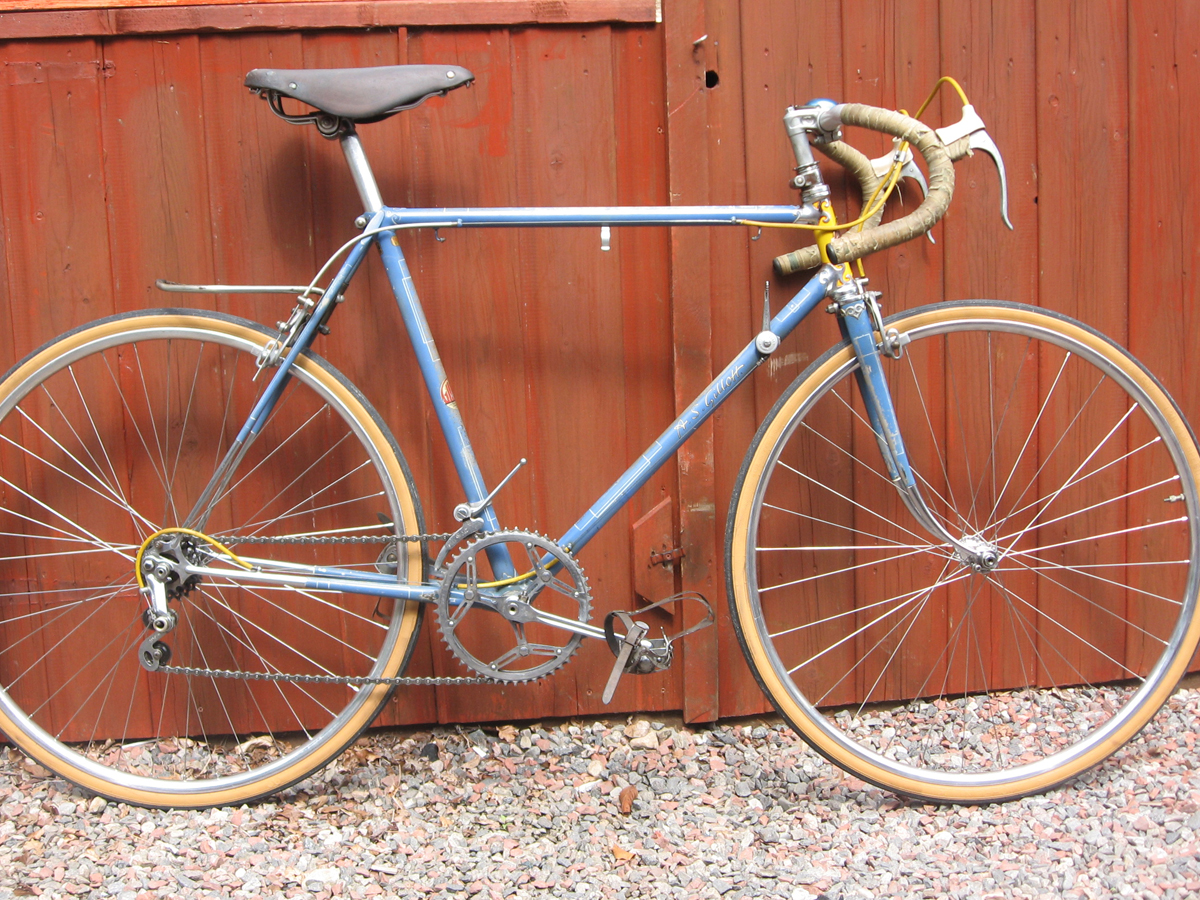
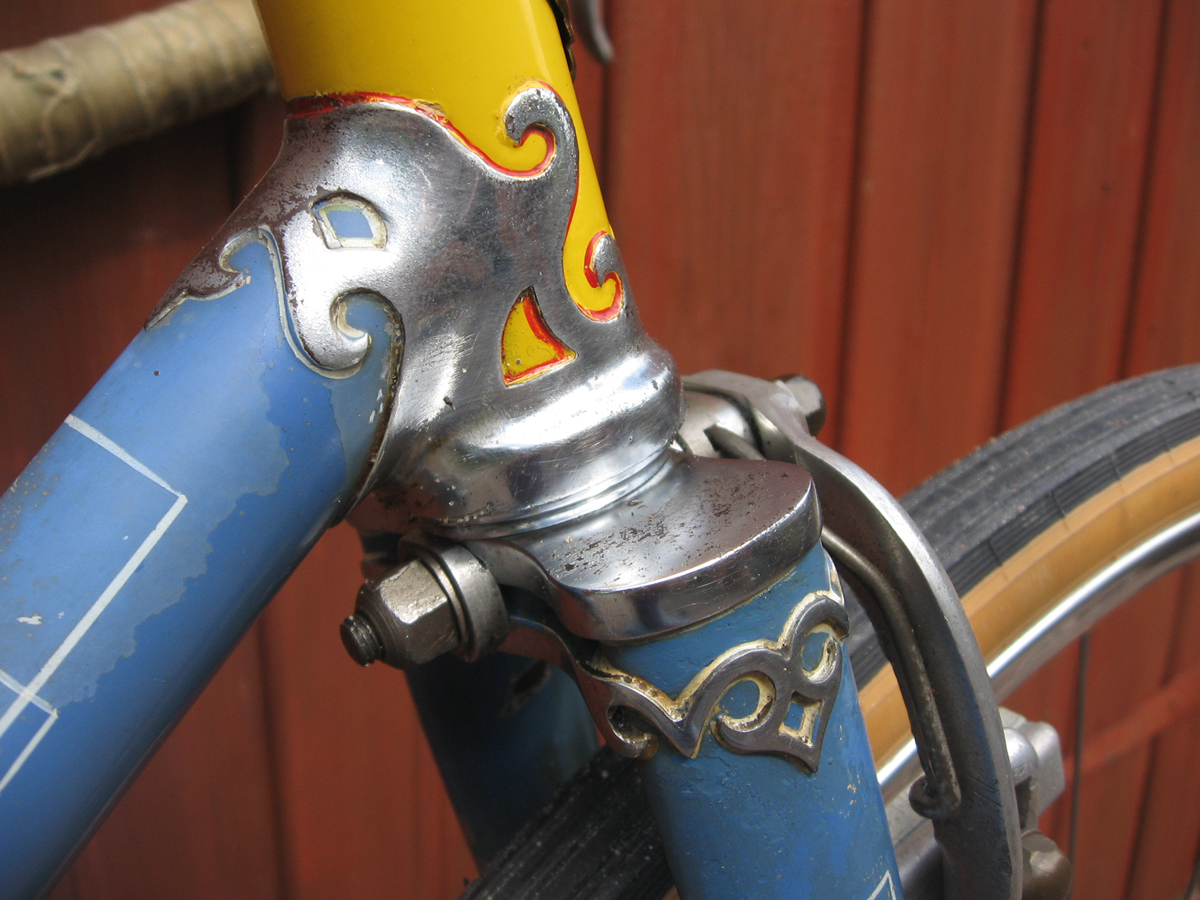
Harry was a stickler for detail and had a keen eye for what was right in a frame. The frames they were building at this time were inspired by best continental practice including mandrelling the lugs to the desired angles. The lugs were initially made by Vaughans of Birmingham and were full of hard inclusions. Oscar Egg lugs became available circa 1949-50.
Also working in the shop at this time were a pair of gentlemen named Len—Len Truman, a talented framebuilder who would likely be better known were it not for some unfortunate personal issues; and Len Hart, mechanic and lug filer (the unsung heroes of all fancy lugged frame suppliers). Bill Philbrook and George Holt were also members of the A.S. Gillott staff at the peak of production, around 1950.
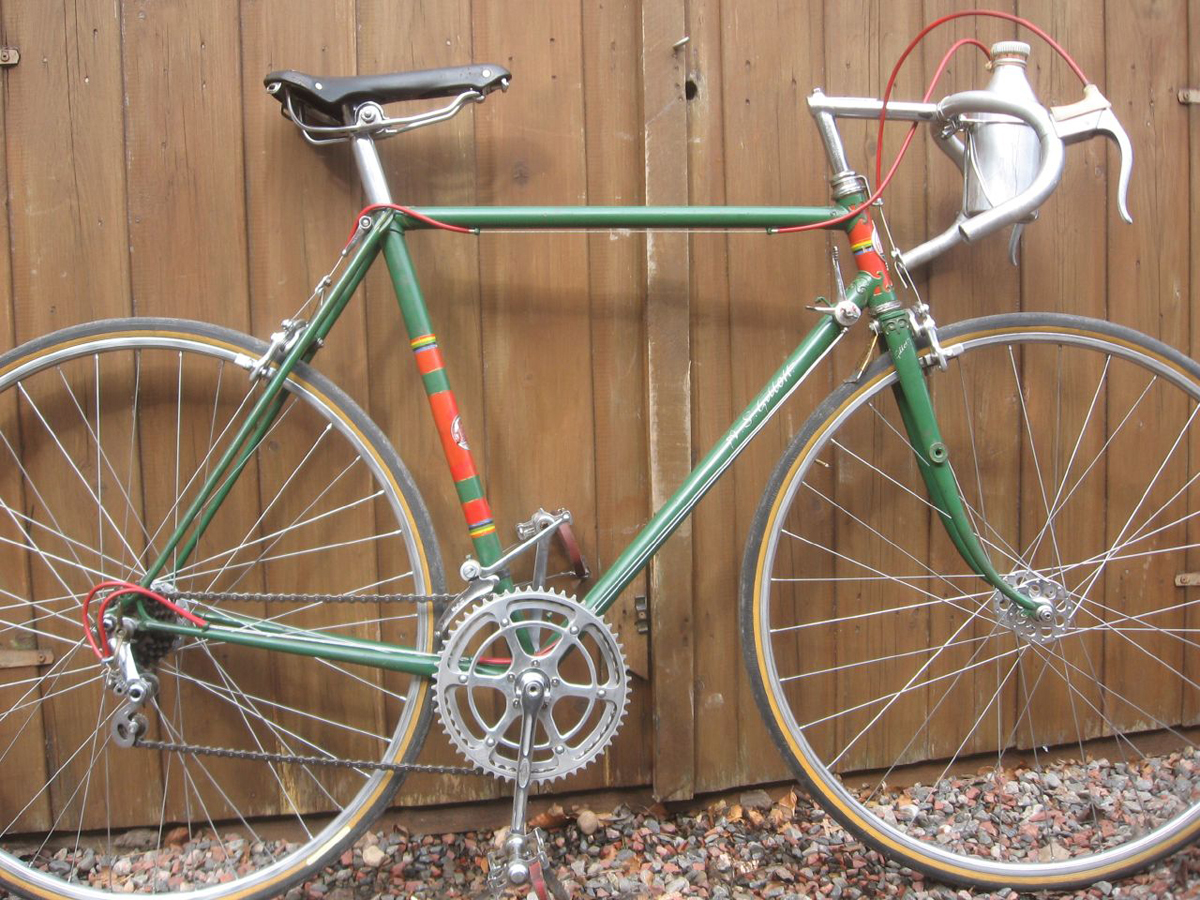
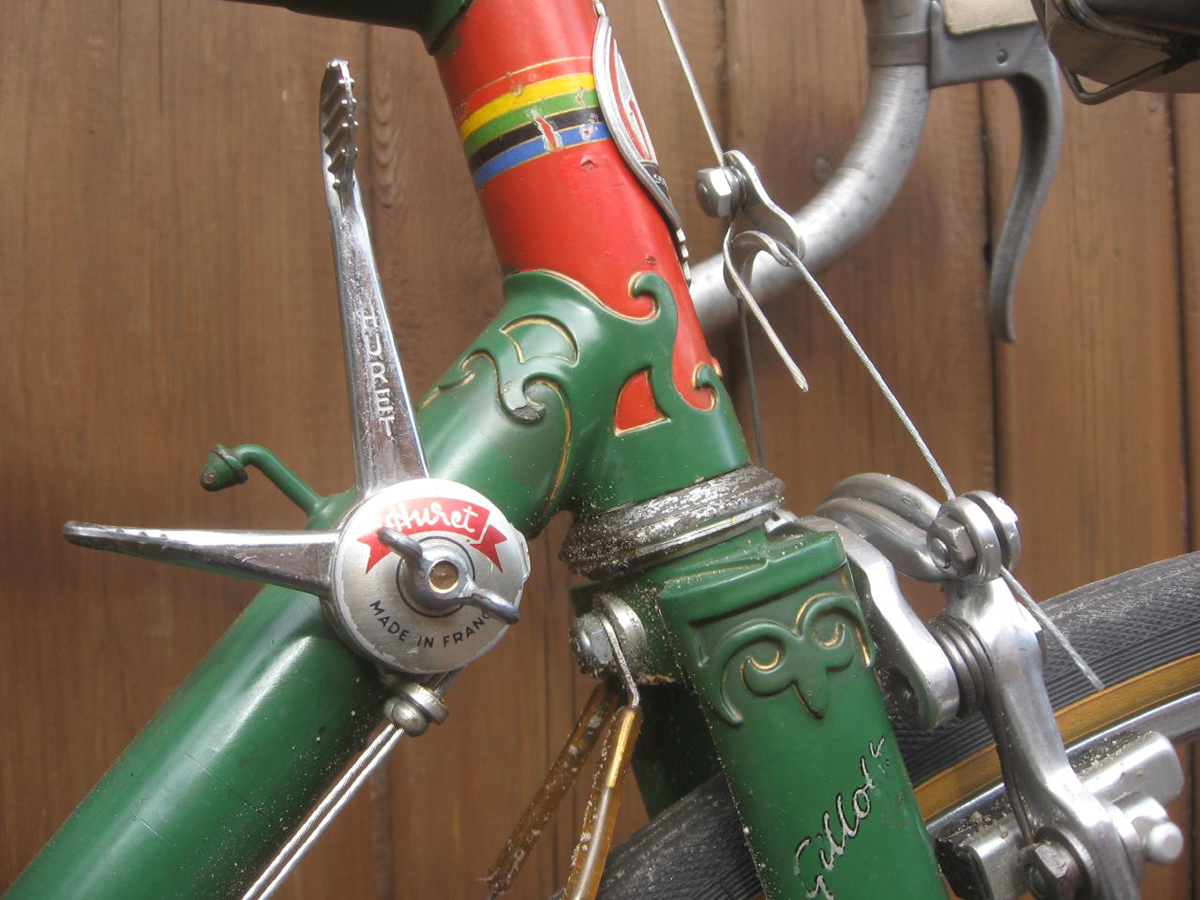
By contemporary standards, the frame building business was very successful, and reached frame number 1000 in 1949. As a consequence, the ‘9’ had to be dropped from the stamping to allow room on the dropouts for the serial numbers to continue to fit. In 1951, the numbering moved to the bottom bracket to allow for future room.
By 1967 it had reached over 6000. All the frames built from 1945 to 1967 were made at the shop in 179 Southampton Way, S.East London; itself a heritage building of the Victorian period. One former tenant of the building was the famous poet Robert Browning.
In 1947, Ron Cooper joined the firm as an apprentice, and worked to craftsman status in just a few short years training under Jim Collier. All the employees at Gillott’s, including the one-armed Ron Brown, were racing men, and had a profound influence on Cooper, who stayed with A.S. Gillott through the late 1960s.
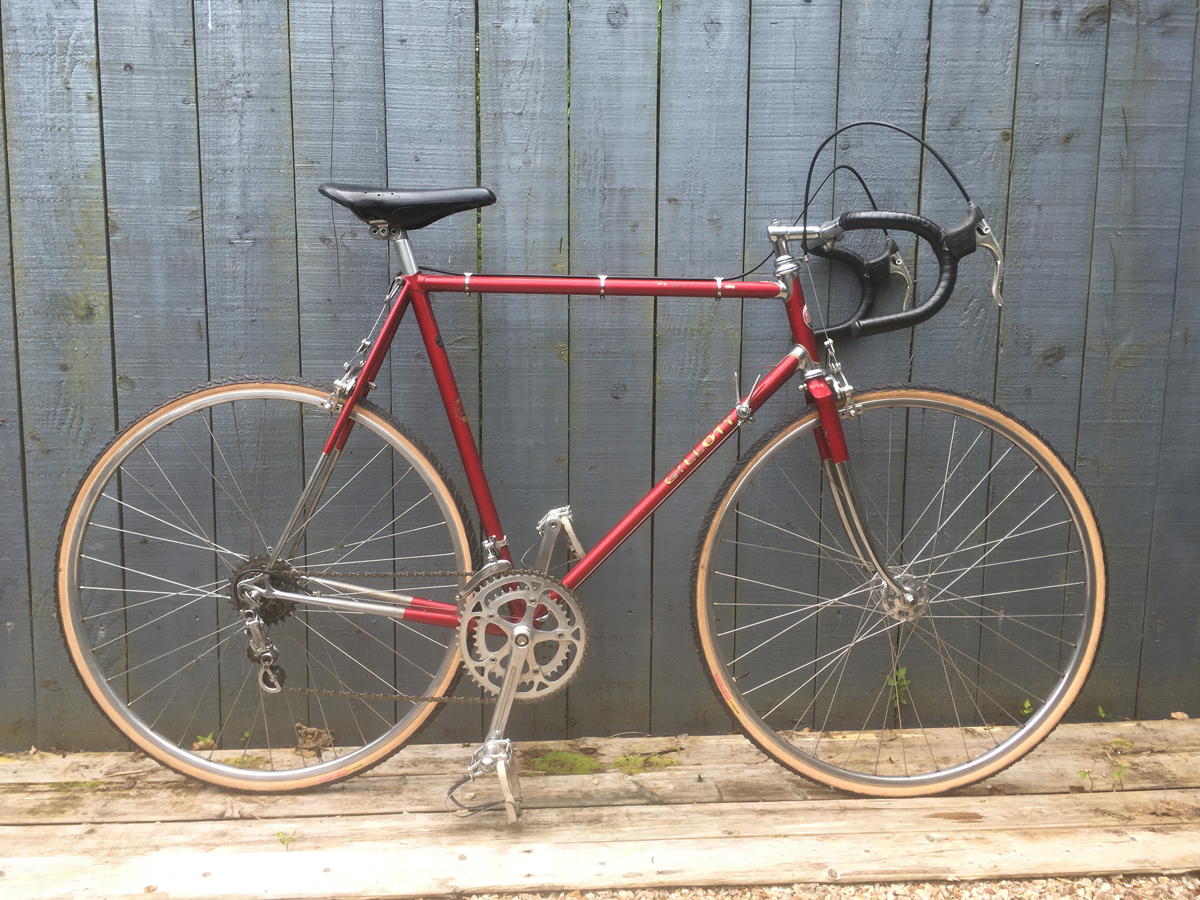
Upon the death of Arthur Gillott in 1957, Harry Carrington took over the business entirely, buying it from Gillott’s widow.
The finish of the early Gillotts was usually stove enamel, or flamboyant (“flam”) finish, nothing elaborate, generally a simple one-color or paneled design. Use of chrome was discouraged, as it was felt the chroming process would weaken the delicate brazing, and the incidence of hydrogen embrittlement dictated caution.
Transfer sets included the downtube script “A.S. Gillott” and an Art Deco style round headbadge, although the block letter “A.S. GILLOTT” transfers more commonly seen in the 1970s were available as early as 1952. They made a complete line of track irons due to their proximity to Herne Hill. They also produced a number of tandem, cyclocross, grass track, and touring cycles, along with a few trikes, but these were a secondary product line to their road and track cycles.
According to A.S. Gillott enthusiast Ken Denny, “The nicest Gillotts are the early ones from 1947-52. These used the high tolerance Oscar Egg spear-point lugs, and wonderful sweeping fork blades, on both oval and round. At this time they also produced frame with tapered tubes and ‘British Made’ bottom bracket sets.”
Numbering in this fashion continued into the mid-1960s when the firm was taken over by Edwardes of Camberwell (221 Camberwell Road, S.East London).
After the sale of the company to Edwardes of Camberwell was completed, Harry Carrington stayed on as manager until 1966 and tried to make a go of it, but left because Edwardes were respraying all sorts of mass production bicycle frames and badging them as Gillotts. They also reneged on a payment and altered copy of a catalogue Harry had spent much time on.
Ron Cooper continued building for A.S. Gillott / Edwardes of Camberwell off and on through the 1960s as orders began to dwindle, until he ultimately left Edwardes in 1967. As such, Ron built the vast majority of the A.S. Gillott frames from the late 1950s through the 1960s, the latest confirmed frame being #686037, which indicated that it was built in 1968, and was the 6037th frame built to date. There is supposed to be an A.S. Gillott Fleur-de-Lis track bike built in 1969, but it’s not listed in the A.S. Gillott register.
By November 1970, Ron started his own shop at Honor Oak, S.East London.
According to a number of sources, Harry destroyed all the previous company records. It has been said that he didn’t wish to pass any company information to the new owners for two reasons: because the heirs to the Gillott estate (Mr. Gillott’s sisters) allegedly prohibited it; and because Mr. Carrington felt that the new Gillott designs would be lacking in integrity if he no longer had a hand in the operation and quality control.
He therefore did not want the same frame designs, serial numbers, etc. to be passed on, and thought that the new owners should start from scratch. However, A.S. Gillott frames built by Ron Cooper from 1966 were still in sequence. Around the same time, the graphics were officially revised from the traditional A.S. Gillott script to the more “modern” A.S. GILLOTT block letters.
According to Mark Stevens, the A.S. Gillott Marque Enthusiast at the Veteran-Cycle Club, in later years, Harry claimed that he did not destroy the records, although no one was able to confirm this.
According to Terry Lack, who spent 12 years at Edwardes of Camberwell, Witcomb Cycles, Deptford, made the frames from 1972 until approximately 1974. Mark Stevens, the A.S. Gillott Marque Enthusiast for the Veteran-Cycle Club, says that batches of frames were also brought in from Holdsworthy and Raleigh in the early 1970s.
During this same period a young Richard Sachs was at Witcomb Cycles, learning the basics of framebuilding from Jim Collier, the former A.S. Gillott framebuilder who trained Ron Cooper during his apprenticeship. By this time, Collier was at least in his 60s, if not older, still building a frame a week, and still never seeming ready to be done with it all.
Because of his time at both A.S. Gillott and Witcomb Cycles, Jim Collier has the distinction of training both the top British and the top American framebuilders.
Harry Carrington, who until his later years lived in Honor Oak, S.East London, near Ron Cooper’s original shop at 49 Honor Oak Park, passed away on June 29, 2007 at his residential home in Peterborough, at the age of 96.
[Editor’s Note: This history could not have been without the assistance and contributions from Mark Stevens, Ken Denny, Chuck Schmidt, Terry Lack, Bruce Robbins, and other members of the Classic Rendezvous mailing list.]


“He therefore did not want the same frame designs, serial numbers, etc. to be passed on, and thought that the new owners should start from scratch. However, A.S. Gillott frames built by Ron Cooper from 1966 were still in sequence.”
Is there any way I can research later frame numbers? Was the original numerical sequence broken/replaced after Ron Cooper stopped building Gillott frames?
I am researching a “Gillott” frame, built, I would guess, between the late 60s and late 70s. Everything about it looks true and of extremely high quality. However the number, as best as I can make out is:
A S G 33 3. So, ASG? And it has a Gillott metal badge. It is a conundrum …
Thank you for an interesting article.
Reach out to Mark Stevens, who is the A.S. Gillott Marque Enthusiast for the Veteran-Cycle Club in the U.K. The easiest way to reach him is probably via the Gillott Bicycles Facebook page.
Thank you for publishing this, a really fascinating read. I saw an all capital letters Gillott on Gumtree today and have really enjoyed reading the backstory.
As a Gillott and a bike rider, congratulations on a great page.